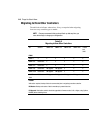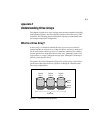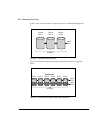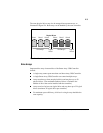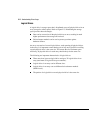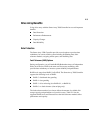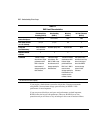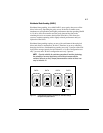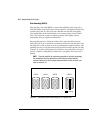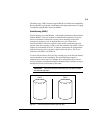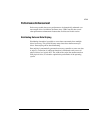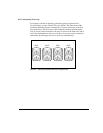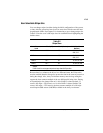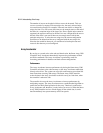
E-8 Understanding Drive Arrays
Writer: Rickard Project: Compaq Smart Array 3200 Controller Reference Guide Comments: 340862-002
File Name: L-APPE.DOC Last Saved On: 12/7/98 9:30 AM
COMPAQ CONFIDENTIAL - NEED TO KNOW REQUIRED
Data Guarding (RAID 4)
Data guarding, also called RAID 4, assures data reliability while using only a
small percentage of the logical drive storage capacity. A designated, single drive
contains parity data. If a drive fails, the controller uses the data on the parity
drive and the data on the remaining drives to reconstruct data from the failed
drive. This allows the system to continue operating with slightly reduced
performance until you replace the failed drive.
Data guarding requires a minimum of three drives (two data drives and one
parity drive) in an array and allows a maximum of 30 drives (29 data drives and
one parity drive). For example, in an array containing three physical drives, data
guarding uses only 33 percent of the total logical drive storage capacity for fault
tolerance. A 14-drive configuration (13 data drives, one parity drive) uses only 7
percent; a 30-drive configuration (29 data drives, one parity drive) uses only 3
percent.
NOTE: Given the reliability of a particular generation of hard drive technology,
the probability of an array experiencing a drive failure increases with the
number of drives in an array. Compaq recommends the number of drives in an
array be limited to 14.
PARITY
P
P
P
P
P
P
P
P
P
DATADATADATA
WAR2-052.AI, 9-2.EPS
P = Parity
Figure E-6. Data guarding stores redundant data [P] on a separate drive.



